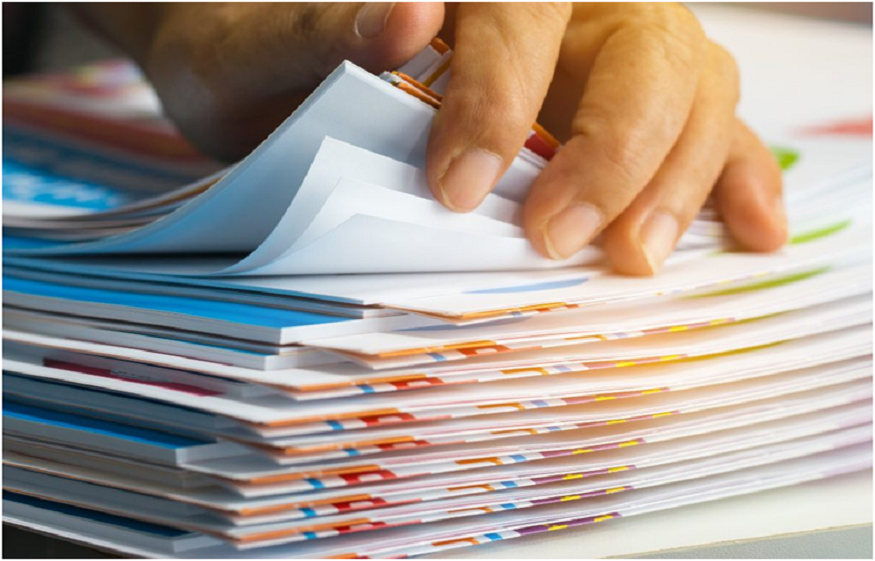A loan application is usually a simple and well-guided process. You can do it online or at the lender’s office. In any case, if you’re ready for it, it will go smoothly. That means you should prepare certain documents, as your bank will certainly ask for them.
Your application is an indication of the lender’s willingness to lend you money. So, they will ask you to fill out an application form and provide your banking information. These documents, along with your credit score and DTI ratio, will affect the lender’s decision of loan approval or denial.
After reviewing the terms of a loan application, you should choose a lender and find the best deal. But before applying for lånpådagen, check your credit score and read the terms carefully. Lenders’ requirements might differ depending on the loan type and the amount you need. So you should discuss these details to find out on time which papers you’ll need. But the following documents are generally required for every loan application.
Proof of Identity
When applying for a loan, you’ll need to submit proof of identity. That will help the lender determine if you are who you claim to be. But the exact documents you need to present depend on the lender. Generally, government-issued photo identification is the best way to prove your identity.
Most people use ID as proof of identity. But if it’s expired or lost, you can use your Social Security card, voter registration card, driver’s license, or passport. Anything with your current photo will do. If you’re unsure where to find these ‘replacements,’ you can contact your state’s vital records office and request a copy.
Proof of Residence
Some lenders might be strict about giving out loans to residents only. So you should prove your residence in some way. Besides your ID, you can use your current utility bills. These are one of the most common proofs of identity. Still, finding a paper copy of these in the digital age can be difficult.
A notary can provide a letter of residency dated within three to four months with the current year printed on it. Notary services are often available at banks, real estate agencies, law offices, and shipping supply stores. If you are a tenant, your landlord may send you a letter proving your residence, even though you are not officially registered at that address.
Proof of Income and Employment
When applying for a loan, you must show the lender that you can repay this debt. That means you have a steady job and source of income. Of course, this doesn’t have to be your salary only. Things like tax returns, alimony, rent, heritage, and similar can also be taken as income.
Still, the best way to prove your income is to show a recent pay stub. It confirms both income and employment status. Also, your payslip provides details about your employer and the pay period. Some lenders require a paycheck for the entire last year, but the majority need only a recent one.
Tax documents are also a solid and accurate proof of income, so keep a copy of your last year’s tax return handy. In addition to a tax return, you must provide W2s from all your previous employers. These can be difficult to get after tax season, so you might want to consider requesting a copy from your employer. Also, you can always submit a current bank statement.
If you are unsure of your income, you can request a signed letter from your employer. Most employers will issue this document within 30 days of the loan application. Depending on your employer, you may be able to get one in a few days or even a week. All of these documents are required to be current and must be present within the last 60-90 days.
Loan Application
Before submitting your loan application, make sure to gather the necessary documents. For both borrower and lender, contact information is required. Also, you must provide the title and position of your current job. And if you’re self-employed, you must provide details of your last two jobs.
But before everything, you will need a loan application form. These will ask you to enter personal information such as income and assets and the loan amount you need. You’ll file most of these by yourself.
Depending on who you borrow money from, you can get these forms both online and offline. The first case applies to online lenders, while the second option applies when you use services of traditional lenders such as banks or credit unions.
Additional Documents
It would be best if you had your income tax returns for the last three years for most loan programs. In addition, most lenders require signed personal financial statements. A bank statement of your personal and business bank accounts may be necessary for certain loan programs. This information is essential because it will be used to assess your financial status.
You’ll need additional documents if you apply for a secured or co-signed loan. Cosigners guarantee the loan and agree to share equal responsibility for its repayment. Make sure you have their ID and proof of income with you. Collateral is a guarantee of your creditworthiness, and it can be anything from a house or a car to wall art. Whatever you pledge, you need something that proves your ownership.
Further, most business loan programs require your company’s current financial statements. Also, some lenders require that you provide a business plan that details the business’s performance. It documents your business’ goals, projections, products, customers, supply chain, and industry analysis. It also lists your finances, cash flow, and accounts.
Generally, the loan application procedure is easy to follow. Your documents and credit reports are essential to getting a loan. You can submit them in paper or digital form. Just make sure you have them ready and up to date. That way, you can show your potential lender how responsible you are and ready to meet their requirements.




